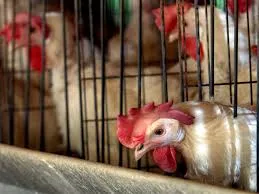Effective Layer Chicken Cages for Optimal Egg Production and Bird Welfare
Nov . 30, 2024 17:20 Back to list
Effective Layer Chicken Cages for Optimal Egg Production and Bird Welfare
Layer Chicken Cages A Comprehensive Overview
Layer chicken cages are a crucial component in the poultry industry, particularly in the production of eggs. These specialized enclosures provide a controlled environment that optimizes the health and productivity of laying hens. As the demand for eggs continues to rise globally, layer chicken cages have evolved significantly, incorporating advanced technology and design features to enhance production efficiency and animal welfare.
Understanding Layer Chicken Cages
Layer chicken cages are designed specifically for hens that are bred for egg production. These cages are typically organized in a tiered structure, allowing for the vertical stacking of multiple cages, which maximizes space utilization. The design has been refined over the years to ensure adequate space, ventilation, and sanitation, crucial for keeping the hens healthy and productive.
The most common types of layer cages include battery cages, enriched cages, and free-range systems. Battery cages, traditionally the most prevalent, offer minimal space per bird, which some argue compromises animal welfare. In contrast, enriched cages provide additional space, perches, and nesting areas, allowing hens to exhibit more natural behaviors. Free-range systems, while not technically cages, grant hens access to outdoor areas, aligning closely with welfare-conscious farming practices.
Benefits of Using Layer Chicken Cages
1. Space Efficiency Layer chicken cages maximize the use of vertical space. This efficiency is vital for commercial operations where land costs can be high, allowing farmers to house a larger number of birds in a smaller footprint.
2. Health and Management Cages facilitate better management of the flock. They reduce the risk of disease transmission by limiting direct contact between birds and making it easier to monitor health conditions. The design of these cages also allows for easier cleaning and access to the hens, simplifying routine management tasks.
layer chicken cages

3. Improved Production Rates With optimal living conditions and easier management, layer chicken cages generally lead to higher egg production rates. The controlled environment within the cages helps regulate temperature and humidity, crucial factors for egg-laying hens.
4. Efficiency of Resources Layer cages can improve feed efficiency as they help to minimize waste. The design reduces litter usage and allows for better collection of eggs, which can subsequently lower production costs.
Ethical Considerations and Animal Welfare
Despite the advantages of layer chicken cages, there is a growing movement advocating for the welfare of laying hens. Critics of battery cages, in particular, have raised concerns about the confinement and lack of space for natural behaviors. As a response to these concerns, many producers are transitioning to enriched cages or free-range systems that allow hens to express more natural behaviors, such as nesting, perching, and scratching.
Regulatory frameworks in various countries are increasingly mandating better living conditions for poultry, pushing for the adoption of enriched or alternative housing systems. Farmers and producers must navigate these changes while balancing consumer expectations, economic viability, and animal welfare.
Conclusion
Layer chicken cages play a pivotal role in modern poultry production, helping farmers meet global demands for eggs efficiently. While they offer numerous benefits in terms of space utilization, health management, and production efficiency, ethical considerations and animal welfare concerns cannot be overlooked. As the industry evolves, a responsible approach that includes improving living conditions for hens and adopting more humane practices is essential. Ultimately, the future of layer chicken cages will likely reflect a balance between technological advancements and the commitment to animal welfare, ensuring that the needs of both producers and animals are met. In this dynamic landscape, ongoing dialogue between consumers, producers, and regulatory bodies will shape the future of egg production.
-
Automatic Feeding Line System - Anping County Yize Metal Products Co., Ltd.|Pan Feeder Nipple Drinker,Broiler Farming
NewsJul.30,2025
-
Automatic Feeding Line System Pan Feeder Nipple Drinker-Anping County Yize Metal Products Co., Ltd.
NewsJul.30,2025
-
Automatic Feeding Line System-Anping County Yize Metal Products Co., Ltd.|Durable Construction&Easy Maintenance
NewsJul.30,2025
-
Automatic Feeding Line System-Anping County Yize Metal Products Co., Ltd.|Pan Feeder Nipple Drinker&Durable Poultry Farming Solution
NewsJul.30,2025
-
Automatic Feeding Line System Pan Feeder Nipple Drinker|Anping County Yize Metal Products Co., Ltd.
NewsJul.29,2025
-
Automatic Feeding Line System-Pan Feeder Nipple Drinker|Anping County Yize Metal Products Co., Ltd.
NewsJul.29,2025






